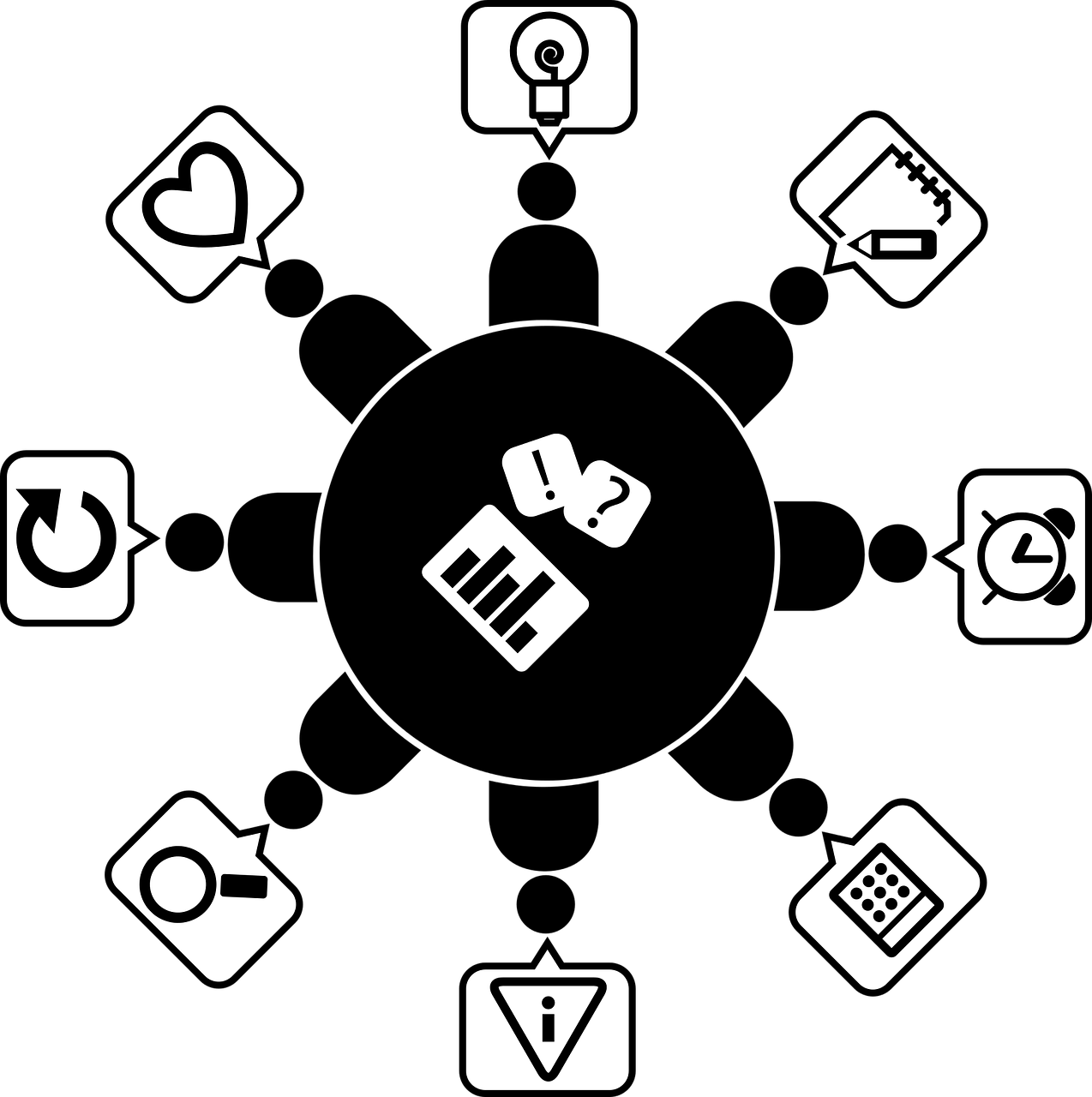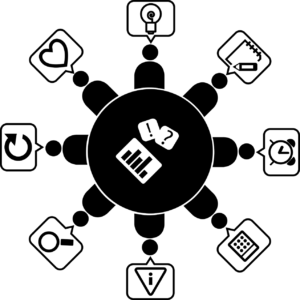

A well led brainstorm is an excellent way to quickly draw ideas from a group and develop them collectively. It can be applied to provide solutions to problems, or to generate new strategies and ideas. In stark contrast, a badly facilitated brainstorm can be a time-wasting exercise, which hits efficiency and morale. HR can have an important role to play by identifying effective facilitators and supporting the quality of sessions through training and development.
There are a number of ways in which facilitators can more effectively leverage the strengths of groups and create positive environments for creativity. This includes adhering to a number of important ground rules and managing the sessions in a skilled and organised manner.
7 steps toward successful brainstorming
The brainstorming process should follow a coherent structure and adhere to certain rules:
- Define and agree on the objective.
- Brainstorm ideas and suggestions after having agreed a time limit.
- Categorise/condense/combine/refine.
- Assess/analyse effects or results.
- Prioritise options/rank list as appropriate.
- Agree action and timescale.
- Control and monitor follow-up.
The role of facilitators
Breakthroughs occur when people find ways to build on existing ideas, an argument promoted by creativity theorist Andrew Hargadon. This underlines that the facilitator must seek to combine and extend ideas, not just harvest them. The power of group brainstorming comes from creating a safe place where people with different ideas can share, blend and expand their diverse knowledge.
If the main goal of a session is only to collect the creative ideas that are out there, group brainstorms are unnecessary. A web-based system or even an old-fashioned employee suggestion box can perform this limited task.
Choosing the right facilitator to head a brainstorming session is of course paramount to ensuring its success. The role should not be given by default to the most senior person; it requires the right kind of personality and a specific set of skills, which must be honed over months or years. HR must identify a group of employees who show a natural ability to facilitate these sessions and seek to utilise and develop their talent. So what must a facilitator be able to do in a session?
- Stand in front of groups and communicate in a clear and interesting manner.
- Spot opportunities that come up and are not picked up or developed by group.
- Keep the group’s energy high and raise it if it fades.
- Control dominating participants and encourage shy members to join in.
- Keep the group on track and focussed on productive objectives.
- Use different techniques to draw ideas from the group.
- Keep the meeting on schedule.
Before a brainstorming session, you should circulate a memo detailing the subject and desired outcomes. Any deadlines and special tasks for participants should be outlined, alongside background information and an explanation of the rules.
“Creativity comes from a blend of the individual and the collective” as Alex F. Osborn, who popularised brainstorming, has rightly asserted. This means it is important to plan a period of individual brainstorming before the group session takes place. Neglecting individual brainstorming can cut off possible alternatives, as ideas noted on the board/flip-chart can lead or steer participants in a particular direction.
Once the group session begins, the atmosphere must be free of judgement, ridicule or negativity. All ideas are welcome and none are belittled or dismissed. By keeping a high tempo to generate ideas, you can keep the internal judge at bay. Everyone should feel like part of the group, as collaborators working towards a common goal. The worst thing a facilitator can do is set up a session where ideas are explicitly rated, ranked and rewarded. Underpinning the desired atmosphere is the need to record every suggestion during the initial phase. Then, at the end of the time limit or when ideas have been exhausted, different coloured pens can be used to categorise, group and connect the random ideas. They can be refined by making new headings or lists, and weaker ideas can be diplomatically included within other themes to avoid dismissing contributions. This is done in recognition that brainstorming is also an opportunity to build teams and increase morale. Working together, the group must evaluate and analyse the validity of the ideas on the list. Then move the process onto developing and prioritising the ideas into a more finished list or set of actions.
Sessions can typically last for three hours, or one hour for smaller projects. So what can you do in your role as facilitator if the meeting gets mired and sleepy? Take a few minutes to get everyone to stretch and move around, and supply some refreshments to keep blood sugar levels stable. Various techniques are at your disposal to jump-start tiring minds; these include creativity games, showing an amusing video or using humour. As the brainstorm session draws to a close, summarise what has been covered and where you are in the process. Seek feedback from the participants and allocate tasks from the list of ideas, which have been harvested and developed during the session. It is important to implement the actions or ideas agreed upon during the meeting. A timetable must be agreed, and responsibility allocated. After the session, circulate notes, monitor and give feedback. Primarily you are seeking to develop a clear and positive outcome so that people feel their effort and contribution was worthwhile. When people see that their efforts have resulted in action and change, they will be motivated to contribute in future.
Brainstorming sessions can be used for more than just generating ideas. They can support your company’s culture and work practices through becoming places to listen, learn and educate. By bringing together staff members with different skill sets and knowledge, new approaches are spread within the company.
The explicit goal of a group brainstorm is to generate ideas, but it also acts to enhance team spirit and promote collaborative approaches to work problems. Brainstorming sessions are generally enjoyed by participants and therefore can have a positive impact in terms of the morale within your company.




